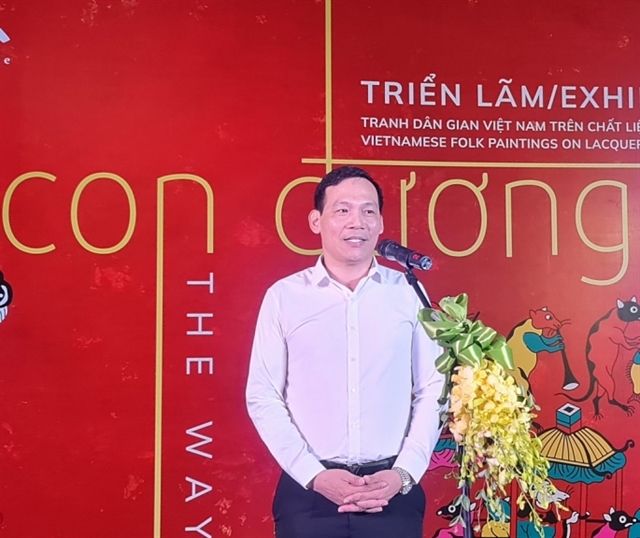 Life & Style
Life & Style

 |
| Chairman of La Toa Indochina Phạm Ngọc Long. Photo courtesy of Hà Nội Museum |
One hundred paintings are on a display at Hà Nội Museum in an exhibition entitled Con Đường (The Way). The works are part of the La Toa project to preserve and promote the folk painting genre.
Việt Nam News reporter Nguyễn Bình spoke to Phạm Ngọc Long, chairman of La Toa Indochina, about the project.
Could you tell us more about the project?
We are a group of artists who want to continue and promote the cultural heritage of the nation's artistic predecessors and improve the value of Vietnamese folk painting and traditional lacquer and engraving paintings.
We also see the necessity and urgency in preserving and developing the folk painting genre.
Lacquer painting has existed for a long time in the flow of Vietnamese painting. Basically, lacquer painting incorporates traditional colours such as brown, black, red, yellow and white.
Until 1930, Vietnamese artists who are the first generation of Indochina Fine Arts College researched and experimented with the technique of inlaying egg and pearl shells.
They painted and did research passionately, mobilising the traditional know-how of the lacquer craft while experimenting with new techniques.
Five years ago, we had an idea to combine techniques of lacquer and engraving. It took us four years to research and experiment and one year to renew the folk paintings.
There have been many projects on preserving and developing folk paintings. How is your project different?
It is true that many have worked to preserve and develop folk paintings, aimed at honouring the value of folk painting and bringing it closer to the public.
But they usually use dó (poonah) paper and silk. These materials are not durable and not suitable for consumers and interior decoration.
La Toa project aims to promote the value of folk painting and make it more beautiful with durable materials. La Toa artists combine engraving-lacquer techniques to renew the folk paintings.
Why did La Toa artists choose engraving and lacquer?
Folk painting is our predecessors' achievement, and we should make good use of combining it with modern techniques.
Folk paintings can be coloured by hand, they must be shaped by strokes. Engraving makes the shaping, and lacquer provides an attractive cover. Lacquer and engraving allow the artists to demonstrate everything they want.
What is your plan after the exhibition?
We have targets that will be carried out in different phases. Renewing and promoting folk paintings with lacquer and engraving techniques is the first step. We also want to show the renewed folk paintings abroad.
We aim to sell the paintings to Vietnamese and foreign customers through e-commerce and diplomatic exchange. We hope the renewed folk paintings will be selected for gifts at the national level and as souvenirs as well.
We have been organising two workshops for people who come to experiment with lacquer and engraving techniques at the exhibition, and training centres for young people, including people with disabilities. This not only keeps traditional techniques alive but promotes and enhances folk arts.
However, we face challenges. Thus, we need time and support from the community, authorities and organisations to spread the love of folk culture and help the young generation get to know about the value of folk culture.
Could you say more about the exhibition?
The exhibition opened last month and runs until the end of December at Hà Nội Museum. Going to the exhibition, visitors can see a painting of the national hero Nguyễn Trãi (1380-1442), which is a stunning highlight of the show. The painting is 106cm by 106cm and is based on the original in the museum's collection.
Others include Hàng Trống and Đông Hồ folk paintings.
We received a lot of visitors at the opening ceremony including fine arts researchers and critics. Since its opening, the number of visitors is increasing, especially at the weekend. VNS




